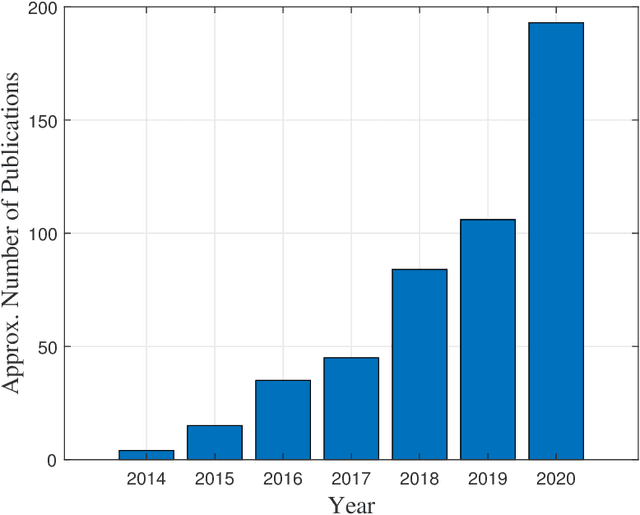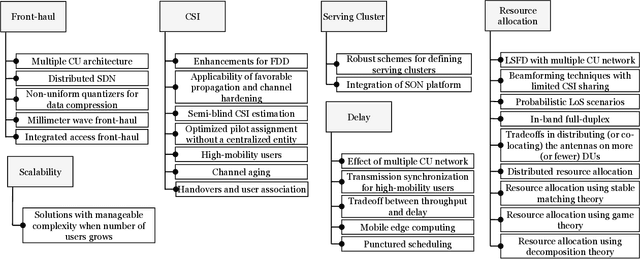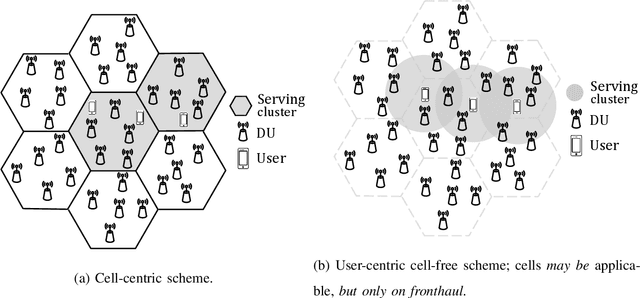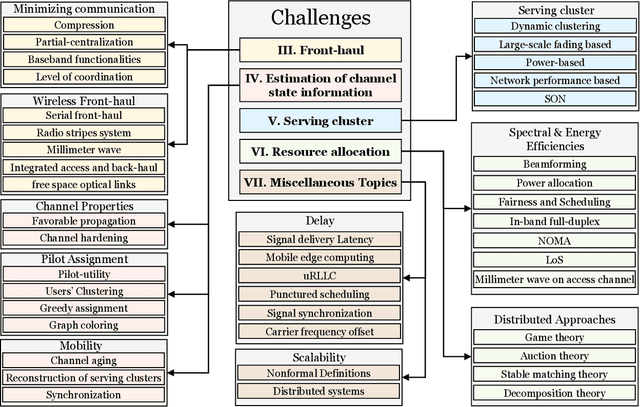User-centric Cell-free Massive MIMO Networks: A Survey of Opportunities, Challenges and Solutions
Paper and Code
Apr 29, 2021



Densification of network base stations is indispensable to achieve the stringent Quality of Service (QoS) requirements of future mobile networks. However, with a dense deployment of transmitters, interference management becomes an arduous task. To solve this issue, exploring radically new network architectures with intelligent coordination and cooperation capabilities is crucial. This survey paper investigates the emerging user-centric cell-free massive multiple-input multiple-output (MIMO) network architecture that sets a foundation for future mobile networks. Such networks use a dense deployment of distributed units (DUs) to serve users; the crucial difference from the traditional cellular paradigm is that a specific serving cluster of DUs is defined for each user. This framework provides macro diversity, power efficiency, interference management, and robust connectivity. Most importantly, the user-centric approach eliminates cell edges, thus contributing to uniform coverage and performance for users across the network area. We present here a guide to the key challenges facing the deployment of this network scheme and contemplate the solutions being proposed for the main bottlenecks facing cell-free communications. Specifically, we survey the literature targeting the fronthaul, then we scan the details of the channel estimation required, resource allocation, delay, and scalability issues. Furthermore, we highlight some technologies that can provide a management platform for this scheme such as distributed software-defined network (SDN) and self-organizing network (SON). Our article serves as a check point that delineates the current status and indicates future directions for this area in a comprehensive manner.
 Add to Chrome
Add to Chrome Add to Firefox
Add to Firefox Add to Edge
Add to Edge